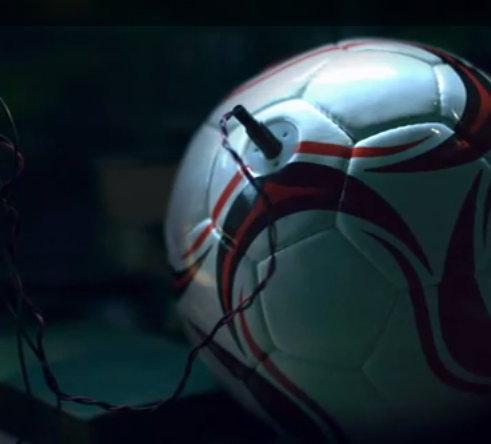 In the next five years your shoe may be what powers the battery in your cell phone. Engineers are harnessing the power of kinetic energy and one IBM employee thinks widespread usage of the technology isn’t far off.
In the next five years your shoe may be what powers the battery in your cell phone. Engineers are harnessing the power of kinetic energy and one IBM employee thinks widespread usage of the technology isn’t far off.
Harry Kolar, an engineer with IBM, described harvesting energy from human movements as bodies becoming “an energy-generating machine,” in a blog post about what energy changes may occur in the next five years. In essence, we create energy from many of the little activities we do throughout the day. This includes the simply click of a heel on the ground, jogging and biking. It’s similar to the hamster on the wheel scenario. This time, however, it’s on a much larger, human scale and only takes energy from our regular activities. Kolar explains the energy collection could come from a small device and antenna implanted into the sole of your shoe, measuring each time it comes in contact with the ground, or even simply bends. Similar devices could be implanted on the spokes of bike wheels, or even attached to pipes to catch energy from running water.
“This science — parasitic power collection — pulls and transmits energy created by the slightest movement.” said Kolar in the blog post. “Think about the possibilities.”
Kolar also predicts that we will figure out how to best harness wave and tidal energy. Currently, we have floating energy receptacles, which harvest wave energy, but they are clunky and may have a negative impact on the environment around it. When we think of pollution, we usually think about plastic bags and bottles floating in water, confusing fish into thinking it’s food, and hurting the environment. This is certainly one kind of pollution, but rarely do people consider noise to be pollution. If you’re a person raised in the quiet countryside, trying to fall asleep to car alarms and sirens may feel intrusive. Well, this is the same for fish and marine animals who have to listen to hums and whirrs that exist from man-made machinery.
 “My team is working with The Sustainable Energy Authority Ireland to use real-time streaming analytics that monitor the underwater noise and track its potential impact on the marine environment,” said Koler. “That data will be shared across the wave energy industry to help build a clearer picture of how this type of technology can be safely, sustainably used and controlled.”
“My team is working with The Sustainable Energy Authority Ireland to use real-time streaming analytics that monitor the underwater noise and track its potential impact on the marine environment,” said Koler. “That data will be shared across the wave energy industry to help build a clearer picture of how this type of technology can be safely, sustainably used and controlled.”
Others are already taking advantage of this parasitic power collection, with the goal of powering third world countries through soccer. Yes, soccer. Soccket has created a durable soccer ball that when kicked around for only a half hour can power up an LED light for up to three hours. The balls are made specifically for communities with little resources and sometimes rough terrain. The ball replaces kerosene lamps, which according to Soccket are the equivalent of smoking 40 cigarettes a day.
Kinetic energy will play a big role is where we get out energy from, and we’re already starting to develop way of capturing it. It’l be important to keep innovation rolling over the next five years as Kolar believes we’re running out of resources — and quickly.
“With populations growing and electricity demand expected to grow at 2.2 percent per year to 2035 (according to the World Energy Outlook 2010),” Kolar explain, “Our current energy infrastructure is just not enough.”
VentureBeat's mission is to be a digital town square for technical decision-makers to gain knowledge about transformative enterprise technology and transact. Learn More

